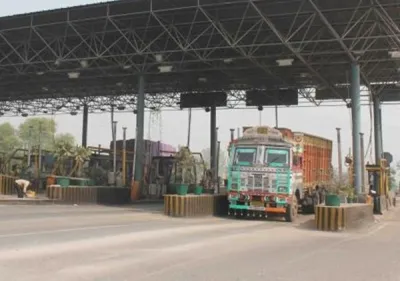How is NHAI Improving the Reporting of 'Loose FASTags'?

Synopsis
Key Takeaways
- NHAI is enhancing toll operations by addressing Loose FASTags.
- A dedicated email ID has been established for reporting.
- The initiative aims to improve user experience on National Highways.
- Government has reduced toll rates by up to 50% on specific highway sections.
- FASTags have a penetration rate of over 98% in the country.
New Delhi, July 11 (NationPress) In an effort to enhance the efficiency of toll operations and improve the monitoring of 'Loose FASTags', the NHAI announced on Friday that it has optimized its policy for toll collection agencies and concessionaires to swiftly report and blacklist such FASTags—often referred to as “tag-in-hand”.
With upcoming initiatives like the Annual Pass System and Multi-Lane Free Flow (MLFF) tolling, addressing this issue is essential to maintain the authenticity of FASTags and the reliability of the system, stated the Ministry of Road Transport and Highways.
Some vehicle owners intentionally do not affix FASTags on their windshields.
“Such actions create operational hurdles, leading to lane congestion, false chargebacks, and misuse within the closed-loop tolling system, ultimately disrupting the Electronic Toll Collection framework, causing unnecessary delays at toll plazas, and inconveniencing other users of National Highways,” the ministry emphasized.
To facilitate prompt corrective actions, the NHAI has established a dedicated email address and instructed toll collection agencies and concessionaires to report these FASTags immediately.
Upon receiving reports, the NHAI will act swiftly to initiate the blacklisting or hotlisting of the reported FASTags.
With a penetration rate exceeding 98%, FASTag has transformed the Electronic Toll Collection system across the nation.
Loose FASTags or “tag-in-hand” continue to be a challenge for the efficiency of Electronic Toll Collection operations.
“This initiative will enhance toll operations, ensuring seamless and comfortable journeys for users of National Highways,” stated the NHAI.
Earlier this month, the government slashed toll rates by up to 50% on specific segments of National Highways that include structures such as tunnels, bridges, flyovers, and elevated roads. This initiative aims to reduce travel expenses and make road journeys more affordable for citizens.
The Ministry of Road Transport and Highways has revised the National Highways Fee Rules, 2008, and introduced a new methodology for calculating toll charges.









